 Your new post is loading...
 Your new post is loading...

|
Scooped by
Jeff Domansky
September 25, 2017 11:10 AM
|
As a result of such “programmatic” buying, advertisers often are in the dark about where their ads end up. Advertisers can opt out of certain sites, of course, but only if they affirmatively place them on a blacklist of sites. So when an ad appears on Breitbart, Sleeping Giants or one of its 109,000 Twitter followers and 35,000 Facebook followers flag the advertiser, often accompanied by an image of the sponsors’ ad next to a Breitbart story. The other day, for example, a Sleeping Giants follower tweeted at Country Inns, informing the hotel chain that it was advertising on “the racist Breitbart site.” Within a day, the company tweeted back: “Thank you for your concern. . . . We have added Breitbart to our blacklist of ads.” This apparently happens a lot. Sleeping Giants’ database lists nearly 2,900 companies that have declared Breitbart off limits since November — an astonishing figure, though one hard to confirm because some ad buys recur. Nevertheless, it’s not an implausible number. During one 24-hour period, advertisers such as the air-conditioning manufacturer Rheem, transport operator Caltrain, Sutter Health Plus and Rose Medical Center of Denver all publicly acknowledged that they had blacklisted Breitbart in response to a Sleeping Giants tweet....

|
Scooped by
Jeff Domansky
April 27, 2017 11:45 PM
|
Advertisers have found ways to bombard us with promotions no matter what we’re doing: watching TV, checking social media, and even when streaming music. But the future of advertising could be even more invasive when the next public event you attend is full of flying video drones projecting inescapable video everywhere you look.
NTT Docomo, one of Japan’s largest wireless carriers, created this unique flying sphere that’s surrounded by eight curved LED strips that can spin at high speed while it’s flying. (As light and thin as LCD displays have become, they’re still relatively heavy for a battery-powered drone to hoist into the air.) This approach can create what is essentially a flying video screen with minimal weight to improve battery life and flight times. The design also allows the drone’s propellers to be hidden inside, so as not to obstruct images or videos being displayed.
The image resolution on this 35-inch-wide prototype is limited to just 144 x 136 pixels—lower resolution than even the Apple Watch’s tiny screen. So if you were hoping one of these drones could follow you around letting you binge on Netflix all day, you won’t have the best experience. But as the technology improves, eventually this flying video drone could reach HD resolutions, and maybe even 4K....

|
Scooped by
Jeff Domansky
April 5, 2017 10:56 PM
|
Blockchain, best known so far in the financial space as the technology underpinning bitcoin, is essentially a massive, shared Excel sheet that can have many uses. These range from figuring out whether tuna is sustainably fished to whether the handbag you bought is counterfeit. But in advertising, the theory is turning into practice thanks to a host of different companies all using it to track ad impressions in digital media. The key is that blockchain, and adchain, theoretically lets multiple parts of the industry work together with no dependency on one party’s data. “If it’s immutable and decentralized, then you can align incentives,” said Brook. Right now, adchain will embed a tracker in the xml of a creative asset — and in real time, show you who is watching it or if viewability standards aren’t being met. Here’s what that theoretically looks like in the adchain if it’s about figuring out if an impression was real: A buyer buys an impression, which is encrypted in a block, and then broadcasted to every single participant on the chain. The impression is verified by the publisher, then added to the ledger. Everyone in the blockchain gets to see the impression event and approve it.
Last week, adtech company MetaX launched “adchain,” a use of the blockchain ledger to essentially tag a piece of creative and then follow it on the internet to figure out whether it was seen, who saw it, where it actually ran, conversion rates and how budget was spent along the chain....

|
Scooped by
Jeff Domansky
January 9, 2017 11:58 PM
|
It’s been over a decade since the Internet transformed print media.
Very quickly the web’s ability to rapidly disseminate news, and articles, made newspapers and magazines obsolete. Along with their demise went the ability for advertisers to reach customers via print. What was once an “easy buy” for the auto or home section of a paper, or for magazines targeting your audience, simply disappeared. Due to very clear measuring tools, unlike print, Internet ads were far cheaper and more appealing to advertisers – so that’s where at least some of the money went.
While this trend was easy enough to predict, few expected the unanticipated consequences....

|
Scooped by
Jeff Domansky
December 21, 2016 2:53 AM
|
Personalised, data driven, communications have now become firmly entrenched into mainstream marketing portfolios. Developing a single view of the customer across all of their interactions with your brand, and using that to deliver targeted and personalised marketing messages has now become a business imperative. What’s more, for those businesses that are lagging behind the need to ‘get up to speed’ has become even more urgent as a new wave of marketing technology innovation is about to hit....

|
Scooped by
Jeff Domansky
December 17, 2016 2:24 AM
|
Here are the 2017 predictions where advertising is concerned? These 2017 predictions aren’t only for online predictions, but for offline media as well! More specifically, we’ll divide these into advertising in general, ad agencies, ad blocking, digital advertising, game advertising, media, local media, magazines, mobile, newspapers, native advertising, connected television, radio, programmatic, search engine advertising, social media in general, Facebook, Instagram, Snapchat, Twitter,sports advertising, television, ITV, Programmatic TV, and video?...

|
Scooped by
Jeff Domansky
December 2, 2016 11:52 PM
|
"We understand that the environment is changing inextricably, but what do we do now to prepare for this new reality?”
I had become so accustomed to describing the changes in content consumption and its implications for marketers, media companies, and tech-enabled content platforms that I was taken aback.
The nods among her team made it abundantly clear that “what now?” was more than a theoretical question, and one that needed to be addressed ASAP.
Thus, herewith are five practical predictions on the future of digital advertising creativity and real-world recommendations on what to do now to prepare....

|
Scooped by
Jeff Domansky
November 8, 2016 11:12 AM
|
This type of advertising is a little tricky to explain. Some of it’s funny. Some of it’s just strange. But you know it when you see it. And when it’s off the mark, it looks pretty bad. Here are a handful of winners from the past. Emerald Nuts, “Robert Goulet” Edeka, “Supergeil” Sprite, “Sublymonal” Some of the hallmarks of oddvertising can be seen in the following commercials. They often have a deadpan tone. Everyone is treating the alternative reality they live in as normal. Other important points are that the subject must be relevant to the brand and be appropriate for the target demographic. No Baby Boomer has ever jumped off the couch and yelled, “Grab my car keys! I need a bag of Skittles!” after seeing their commercial, “Sheep Boy.” However, Boomers are not the target audience. There are other broad generalities that can be made about oddvertising. Let’s break down a classic commercial from Old Spice, “The Man Your Man Could Smell Like,” featuring Isaiah Mustafa....

|
Scooped by
Jeff Domansky
July 16, 2016 2:58 AM
|
What’s the difference between The New York Times, and, say, DNAInfo New York? Maybe about $20. The Times, along with outlets like ESPN, Hearst, Discovery Communications, Gannett, Slate, and ABC, all consider themselves “premium” media. That means they can charge advertisers “premium prices,” as compared to the great mass of news and entertainment sites out there, like a DNAInfo, a site covering local news across New York City’s five boroughs. That $20 or so difference is how much more the Times can charge for access to each thousand of its readers (a cost-per-thousand rate, or CPM) as compared to lesser-branded sites. It’s just an approximation but it holds true across major media: Big branded media companies believe that the “context” they provide and their “quality audiences” justifies higher-than-average rates. Their pitch to advertisers goes like this: We’ve got tons of readers, and they’re smart and affluent. They really trust us. And when they’re on our site, they’re paying attention. In a word, their argument is a single word: effectiveness. With the publication of a new comScore study this morning, they just got more justification for their justifying. Entitled “The Halo Effect: How Advertising on Premium Publishers Drives Higher Ad Effectiveness,” comScore puts a few numbers on that effectiveness.Its key word: lift....

|
Scooped by
Jeff Domansky
June 13, 2016 10:55 AM
|
If you think the way that retargeting ads follow consumers around the internet is a little creepy, just wait. Retargeting is only getting warmed up. We’re all used to seeing ads for products that we’ve browsed online suddenly pop up ad infinitim on every other site we visit. Retargeting ads are 76% more likely to be clicked than regular display ads. But advertisers are increasingly able to use behavior in one channel to drive a marketing message in another. No longer limited to siloes, retargeting increasingly spans desktop, mobile, and apps. There is even some retargeting experimentation integrating mobile with offline out-of-home billboards....

|
Scooped by
Jeff Domansky
May 18, 2016 1:05 PM
|
Native Insider: Part of the challenge with "native" is that each organization has a different understanding of what it is. For the purposes of the research, what is your definition of native advertising?
Wu: In our study, we defined native advertising as sponsored content, which features content that is similar and consistent with publishers’ content and is often consumed by readers like non-sponsored content. I agree that there are also other types of native advertising, such as sponsored social media posts or sponsored hyperlinks. We focused on sponsored content because it is widely adopted by many news organizations, including very reputable ones like The New York Times.
Native Insider: Your research found that when content was identified as native advertising, readers expressed a lower opinion of the media outlet it was published in. However, the reputation of the company being promoted was not affected. Can you elaborate on this finding?
Wu: I think this was one of the most interesting findings in our study. We originally expected that both companies and media outlets would be negatively influenced. However, the media outlet was the only source that was affected. On one hand, this indicates that readers are not surprised by the sponsored content from a company, since similar covert marketing techniques have been utilized before, such as video news releases....

|
Scooped by
Jeff Domansky
May 4, 2016 7:06 PM
|
Gupta sees the market evolving in a bifurcated way: premium native vs. programmatic native. He sees premium native as branded content and maintains that programmatic native is much closer to display advertising. While there’s a lot of excitement around programmatic native from the ad tech community, Gupta takes the contrarian view that native is premium content created by publishers -- and publishers alone. That’s in contrast to programmatic native, which is created by advertisers.
Gupta’s purist view is that premium native is focused on quality content and engagement, while programmatic native is focused on getting an audience at the lowest possible price. Further, “Publishers are starting to see that programmatic native is different than programmatic display,” Gupta says. “They’ve seen how programmatic display has eroded the value of their premium display business.”
Gupta says that while some premium publishers work with Outbrain and Taboola, they’re rethinking working with these partners because of a poor user experience and click bait. In addition, he says that programmatic native doesn’t offer a way to optimize for engagement. Gupta argues that if you’re a marketer and you buy ads on Outbrain and Sharethrough, you don’t know where those ads are going to run....

|
Scooped by
Jeff Domansky
April 30, 2016 5:33 PM
|
Recent research has shown that half of 18-49 year olds turn to their mobile device first to watch video. Even in the living room, many people prefer to watch on their smartphone – for the control, personalization and ease it offers. And as viewing habits change, we are working to introduce new formats adapted to these habits.
That’s why today we’re announcing Bumper ads – a new six-second video format, sold through the AdWords auction on a CPM basis. Bumper ads are ideal for driving incremental reach and frequency, especially on mobile, where “snackable videos” perform well.
Given the succinct nature of the format, we’ve seen Bumper ads work best when combined with a TrueView or Google Preferred campaign. In early tests, Bumpers drove strong lift in upper funnel metrics like recall, awareness and consideration. We also see that Bumpers work well to drive incremental reach and frequency when paired with a TrueView campaign....
|

|
Scooped by
Jeff Domansky
August 5, 2017 9:55 AM
|
During my stint working for a newspaper, I recall their simple design philosophy: Big, bold text headlines on a white background. As we well know, the web is a totally different animal than print. But many principles of good design are applicable to both mediums. The use of large headline text is one of them. Typography on the web has changed a lot over the past decade or so. Whereas we used to have just a few basic fonts to choose from, we now have more than enough options to satisfy our appetites for beautiful, attention-grabbing headlines. Unlike that newspaper (which generally used one font for its headlines), web designers are exercising their creative freedom to use different types of fonts. Some are using the more traditional bold, serif and sans-serif fonts while others take advantage of more modern styles and weights. Let’s take a look at how designers are utilizing large headlines to convey a message. Most don’t apply to news, per se – they’re more about branding. But, as you’ll see, there is more than one way to successfully approach them....

|
Scooped by
Jeff Domansky
April 5, 2017 11:12 PM
|
The tide began turning against the duopoly late last year when the fake news epidemic illustrated for many the lack of brand safety on Facebook and Google. Brands found out that their ads were showing up next to hate speech or agenda-driven fake news and were understandably miffed.
Fueling that anger, Facebook was caught drastically inflating its time-spent metrics for video by as much as 60-80%. More recently, Google was caught doing something similar with AMP, its mobile-based publishing platform.
Though both have subsequently agreed to third-party analyses of their operations, for many marketers, that was cold comfort since (in Facebook’s case, at least), the abuses had been happening over a long period of time.
In late January, the industry found a spokesman for their discontent with Marc Pritchard, Procter & Gamble’s global CMO, who chastised the industry for its lack of transparency. More recently, Havas pulled its buys on Google and YouTube for UK-based clients in the name of brand safety. ...

|
Scooped by
Jeff Domansky
March 25, 2017 11:55 AM
|
Today, with the help of advancing technologies the medium boasts more than just billboards and transit posters. We’re seeing growth in city smart technology through the use of digital boards, live data, responsive and personalized ads, and 3D specialization. Digital outdoor advertising has opened new doors allowing brands to further hypertarget within niche markets, and as these opportunities are increasing so is the ad spend. In Canada alone, ad spend is set to increase from an estimate of 760 million Canadian dollars in 2016 to 892 million dollars by 2019. So what’s next for the oh-so-promising OOH ad? There’s a new player in the game. Lightvert LTD is a start-up U.K based media technology company, making waves and sparking global conversation about the recent development of ‘Echo Technology’. Founded by Daniel Siden, an American engineer and entrepreneur, Lightvert LTD came together with the help of a team composed of some of the world’s leading experts in Laser Imaging Systems, and Reflective Optics. Echo Technology will allow advertisers to project hyper-scale digital ads up to a sizeable 200m in height, that will stretch across the city skyline....

|
Scooped by
Jeff Domansky
January 9, 2017 11:27 PM
|
Some people claim print is dying. As a journalist, I don’t really like these people, even if they may be right. So it was comforting to find out that consumers still value print, at least when it comes to one crucial metric.
According to an October 2016 survey by MarketingSherpa, 82 percent of U.S. internet users trust print ads when making a purchase decision, more than any other medium. The highest ranking online format, search ads, clocks in at 61 percent, while only 25 percent of Americans trust pop-ups....

|
Scooped by
Jeff Domansky
December 20, 2016 11:03 AM
|
2016 was a year of unprecedented creative opportunities for advertisers. Advancements in technology enabled agencies to develop campaigns across innovative new mediums, pushing the boundaries of digital advertising and inviting consumers to experience brands like never before.Before we see what 2017 has in store, let's take a look back at some of this year's most impactful advertising trends. The following four marketing tactics left a big mark on 2016, and they show no signs of slowing down as we head into the new year. See which trends fueled some of the most creative ad campaigns, and start planning your first 2017 campaign. ...

|
Scooped by
Jeff Domansky
December 2, 2016 11:59 PM
|
It’s not a surprise Facebook and Google have stayed ahead of everyone else. The two platforms have focused on two key areas: personalizing advertising and those mobile trends we just examined.
Last month, Facebook announced that they have a billion mobile-only users -- not a billion users of the mobile app, but a billion people for whom the entire Facebook experience takes place on mobile. Google has invested its vast resources into mobile search, and in May 2015, more than 18 months ago, it said that “More Google searches take place on mobile devices than on computers in 10 countries including the US and Japan.”

|
Scooped by
Jeff Domansky
November 25, 2016 10:51 AM
|
Despite upbeat predictions about holiday spending, retailers shouldn’t expect much help from their advertising: The YouGov BrandIndex reports that for almost half of all large retail brands, advertising awareness is significantly lower than it was a year ago. The consumer perception research firm says that while Walmart still leads in awareness, it’s only connecting with 48% of consumers, down nine percentage points compared to last year. Kmart, a division of Sears, and Best Buy experienced even steeper awareness declines, at 12 points and 10 points, respectively. And while Amazon, Target and JCPenney fared the best, each of them also experienced dips in awareness. The index is based on daily polling, asking respondents two questions about 23 leading stores: “Does it give good value for what you pay?" and "Which of the following brands have you seen an advertisement for in the past two weeks?" Amazon came in No. 1 again this year in YouGov’s value perception ranking. What’s more, it’s out in front by miles, with a score of 55.8%. Old Navy runs a distant second, with a score of 33.7%, and Walmart third, at 32.5%. Costco, Best Buy, eBay, Bed, Bath & Beyond, Target, Kohl’s and JCPenney are all also in the top-10 of the value perception group....

|
Scooped by
Jeff Domansky
October 26, 2016 9:08 PM
|
Ironically, Netflix, the viewing source that gave binge-watching its name, probably has less instances of binge-viewing than any top-10 cable network with stacked programming. I would think viewers spend more time every month watching “Modern Family” on USA, “Full House” on Nick at Nite, “Criminal Minds” on ION, and “South Park” on Comedy Central than they do watching any single series on Netflix (although Netflix in total probably has more instances of binge-viewing than all of them combined).
So what does this mean for advertisers?
It’s not just that people are continuing to watch these shows. Their audiences are extremely loyal, and often not that easy to reach elsewhere. For example, “Big Bang” on TBS reached only about 30% of all adults 25-54 last season, but was still the most-viewed scripted series on television among that demo. ION’s “Criminal Minds” only reached about 15% of all adults 25-54 during the same period, yet was the fourth most watched scripted series on television. That represents an extraordinary amount of repeated viewing to a single show among a small group of extremely loyal and attentive viewers....

|
Scooped by
Jeff Domansky
June 13, 2016 11:31 AM
|
Mobile video ads are poised for massive growth in the next five years. Revenues from these ads will grow from $3.54 billion in 2015 to $13.3 billion in 2020, which marks a 30% compound annual growth rate (CAGR), according to PwC's annual Global Entertainment and Media Outlook report. This means that mobile video ads will be the fastest-growing digital ad segment in the next five years. They will easily surpass desktop Internet video ad revenues, which are expected to grow at a 19% CAGR through 2020. Furthermore, revenues from mobile ads are set to surpass revenues from desktop video ads this year, with $5.6 billion for mobile and $5.1 billion for desktop, according to the report....

|
Scooped by
Jeff Domansky
May 31, 2016 10:42 AM
|
American adults are more apt to generally dislike (61%) than like (34%) advertising, according to arecent YouGov study [pdf]. In fact, intense dislike (“dislike a lot”) outweighs liking advertising “a lot” by an almost 6-to-1 margin (28% vs. 5%) among the 1,000 adults surveyed. However, some groups have a more positive view of advertising’s likability than others. The study breaks down its results by demographic group. Some key highlights from those results follow.

|
Scooped by
Jeff Domansky
May 5, 2016 8:57 PM
|
Now that we have all of these digital touch-points and databases, marketers and their corporate information officers and finance officers are looking for models to organize and manage all of these marketing and advertising activities. And, quite naturally, they are looking for guidance to models that worked on other parts of their business. Not surprisingly, many have focused on what has worked for their supply chain and have tried to apply supply chain-oriented models to their “demand chain.”
I believe that treating marketing – and the creation of customers – with supply-chain models is short-sighted and will be damaging for businesses and their customers. Why? Because is likens acquiring customers to buying commodity raw materials. It assumes that marketing is only a cost, and that customers are commodities. It doesn’t assume that customers are organic assets that can grow. As Wenda Millard famously warned us almost a decade ago at an IAB meeting, trading advertising like “pork bellies” will be damaging to our industry.
Wenda is and was right. Media should not be bought and sold like pork bellies, and not just because much of what makes media special can’t be captured in a real-time-bidded world, but because customers are not commodities, and treating them as such can only hurt businesses that do.

|
Scooped by
Jeff Domansky
May 3, 2016 9:59 PM
|
In the Gartner hype cycle, advertising technology is firmly stuck in the “trough of disappointment.”
This is, in many ways, patently unfair. The shift from manual and inefficient ad buying practices to automated and data-driven ones is a no-brainer. There’s little doubt that automation will play an ever-larger role in advertising. Yet ad tech in 2016 is a victim of its own success. Few people fight its ascendency, but nagging questions have arisen based on outsized expectations.
Talk to brands and publishers, and the formulation is basically the same. There are plenty of tech vendors but not enough standards, driving marketer frustration to an all-time high. Consumers don’t trust ads, as evidenced by the rise of ad blocking. Meanwhile, venture capitalists are pouring less money into ad tech.
Too much complexity
The LUMAscape lays bare the sheer amount of fragmentation in ad tech: “There are too many vendors claiming they do too many things for too many people. It’s turned ad tech into a commodity market,” said Brian Ferrario, vp of marketing at programmatic ad company Drawbridge.
|



 Your new post is loading...
Your new post is loading...





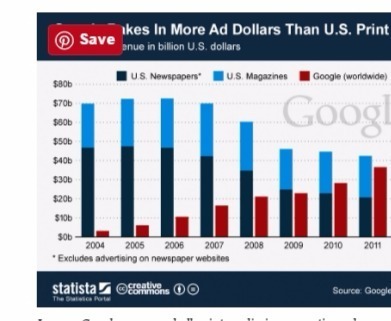







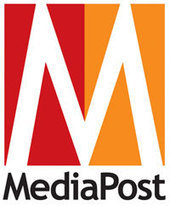




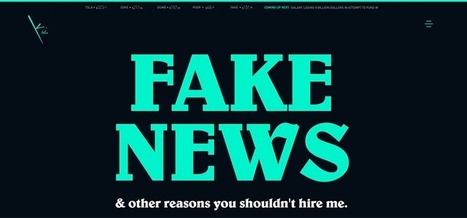
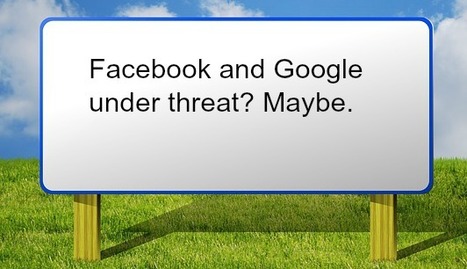
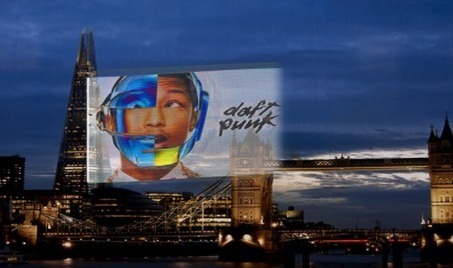

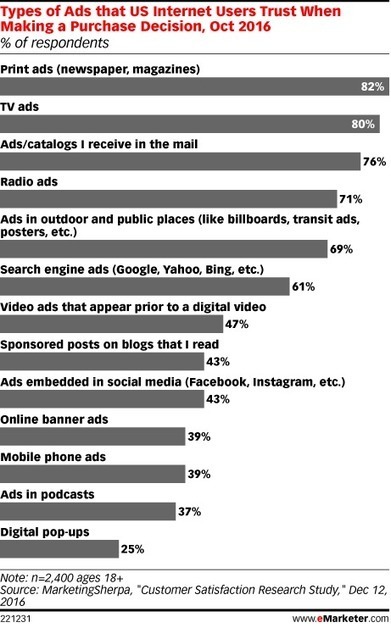















Sleeping Giants is anonymous, but its approach to killing Breitbart’s advertising has been effective.